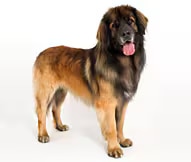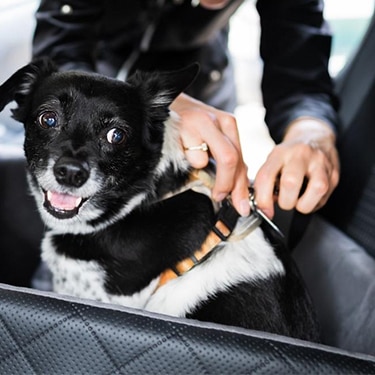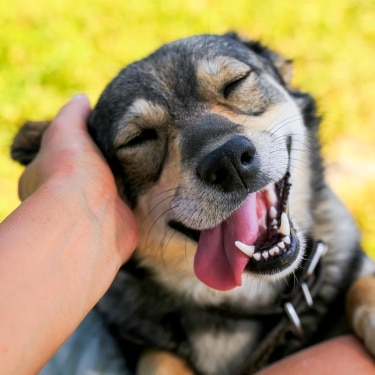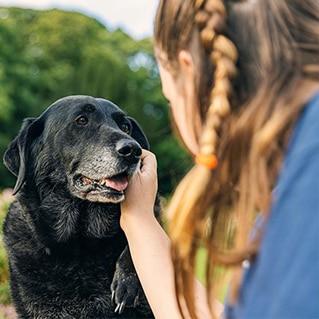The Leonberger's coat is straight or wavy and with a dense undercoat. The texture is medium-soft to rough. The color of the Leonberger is that of a lion: golden-yellow to red-brown. He should have a dark or black mask.
Leonbergers are calm and quiet dogs, but they are not lethargic. They do not make good kennel dogs and prefer being with their guardians. They are active dogs outside and require more exercise than just a walk.
Leonbergers are very intelligent and trainable, but they can be stubborn. They are not known to aggressive with people, although they do become reserved with strangers as they mature.
Leonbergers need a large amount of interaction with people. They are generally good with other pets if properly socialized but can be dog aggressive.
These dogs require brushing and combing two times a week. They do not require trimming. They do not drool.
Leonbergers love activities such as agility, carting, sledding, backpacking and swimming. They love water.
This breed is ideal for a guardian who wants a large, active dog that can be taken hiking, backpacking, sledding, carting and swimming. Leonbergers do not do well left alone for long periods.
Leonbergers typically live eight to 10 years.
The Leonberger appeared in Leonberg, Germany in 1846. Originally, the Leonberger was an attempt by Herr Heinrich Essig to create a dog that looked like a lion, part of the crest of Leonberg. What he created was a large dog with a tawny yellow coat and black points on the muzzle and ears.
During World War I, the breed nearly became extinct. Of 25 Leonbergers, only five were of breeding quality. Two Leonberger devotees, Stadelmann and Josenhans, began a club committed to saving the Leonberger. The breeding program was taken over by the German government during the war and was reestablished after the war by the Deutsche Club fur Leonberger Hunde.
The breed has a modest but growing following in the United States; United Kennel Club recognized the Leonberger in 1991.
Adopt a pet. Change a life.
Are you prepared to adopt a pet? Use these tools to make sure you are ready for the commitment.
Adopt a pet. Change a life.
Are you prepared to adopt a pet? Use these tools to make sure you are ready for the commitment.






















